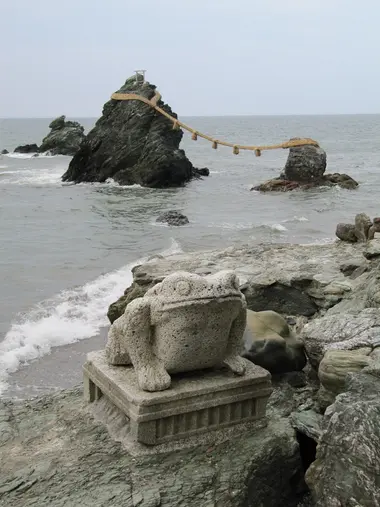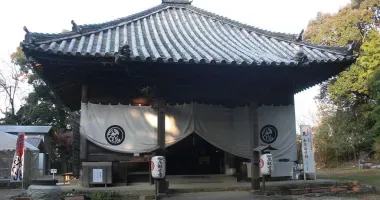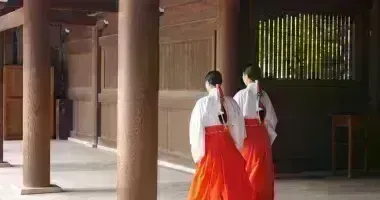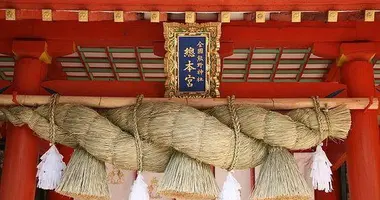The 'Married Couple Rocks' of Meoto Iwa 夫婦岩
Meoto Iwa: the Married Couple Rocks of Ise
Meoto Iwa, literally "Married Couple Rocks" or "Husband and Wife Rocks," are sacred rocks located in the sea near Futami, a small town in Ise, Mie Prefecture. While the great Ise Shrine honors Amaterasu, founder of the imperial lineage, Meoto Iwa symbolizes the two creative deities of Japan, forever linked by the bonds of marriage.
Formerly, this sacred place was used to wash and purify before going to the Ise Shrine, near the two rocks. In the Shinto religion, a cult, iwakura, is dedicated to the rocks, considered to be sacred places where the kami, Shinto gods, are invited by men to come down to earth.
A couple of rocks bound by a rope
A large rock (9 meters high) is next to a smaller one (4 meters high), linked by a braided rope. The image is famous, and it resonates with symbols in the eyes of the Japanese. Because these " married couple rocks" represent the creator gods of Japan and the Shinto pantheon, Izanagi (male divinity, the big rock) and Izanami (female divinity, the small one). The largest is topped with a torii.
Between them, a taut rope, shimenawa, braided from rice straw. It usually delimits a sacred space that must be kept away from impurity and is sometimes found placed around a tree or a rock in a shrine, meaning that the plant or mineral element is the abode of a kami (god). Gohei (strips of white paper folded in a flash) are often hung there. Meoto Iwa's weighs more than 200kg and is replaced three times a year during the Shinto ceremony of Oshimenawahari Shinji, on 5th May, 5th September and in mid-December. On these days, the ujiko, the parishioners of the shrine, replace the five ropes that make up the shimenawa. Each is 35 meters long, 10 centimeters wide and weighs 40kg.
The Meoto Iwa symbolizes the sacred union of man and woman. The neighboring shrine of Futami-Okitama (which borders the coast where the two rocks bathe) is mainly dedicated to marriage and marital happiness. It is a very popular place with newlyweds who, for safety, do not hesitate to buy amulets sold at the shrine to ensure a happy marriage.
The surroundings of the shrine are strewn with stone statuettes representing frogs. The Japanese think that it is a lucky animal that offers its good luck to pilgrims before they leave: in Japanese, "frog" is kaeru, which is pronounced in the same way as the verb meaning "to return".
To see around Meoto Iwa
The path that leads to the rocks (20-25 minutes walking from Futaminoura station) passes in front of another small shrine: Ryugu, dedicated to the dragon, the god of the sea. The water which flows from its mouth is supposed to purify visitors. At the end of the trail, a few restaurants and souvenir shops welcome visitors.
Opposite the Meoto Iwa is the Hijitsukan building. It was once a place of accommodation for important personalities who visited the great shrine of Ise. It has been turned into a museum and is open to the public.
A highly photogenic place in Japan
Note to photographers: to take an ideal photo, the tide must be high (but not too high because the sea engulfs the braided rope) so that the rocks appear separated by the water. It is best to go there at dawn between May and July: then you can see the sun rise between the two rocks.
Or, at twilight from November to February when the moon (choose full moon days) replaces the sun between the two rocks. If the weather is very clear, and with great luck, you can sometimes see Mount Fuji. On the other hand, although very photogenic, is very small.
If these photogenic and romantic rocks appeal to you, know that there are others in the country, including the Meoto Iwa "married couple rocks" in Futamigaura bay in Fukuoka prefecture (in Kyushu) and the rocks of Hatago-Iwa.
- Read also: Mount Fuji
Find out more: 10 places to see in Mie Prefecture



















